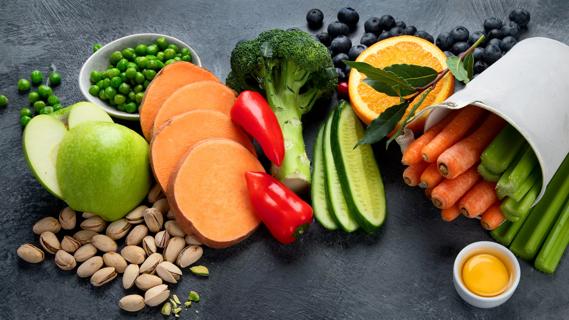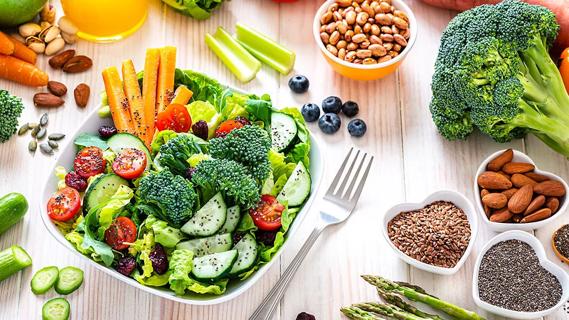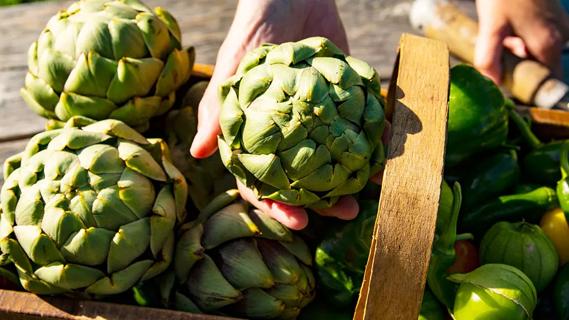Its health benefits are impressive, but it’s still liquid sugar, so be sure to consume honey in moderation

Winnie the Pooh might have been on to something. While honey is best known as a natural sweetener, it has some surprising health benefits, too.
Cleveland Clinic is a non-profit academic medical center. Advertising on our site helps support our mission. We do not endorse non-Cleveland Clinic products or services. Policy
But have you ever wondered what honey is, exactly?
“Honey gets its sweetness from its chemical makeup,” explains registered dietitian Beth Czerwony, RD, LD. “It’s made up of two simple sugars called glucose and fructose, along with some minerals.”
In other words, honey is essentially a natural liquid sugar. It’s made by hardworking honeybees, who collect nectar from flowers and take it back to their hive, where they chew on it until it turns into honey. Then, they deposit the honey into tiny, waxy storage units called honeycombs and fan it with their wings to dry it out, a process that makes it stickier.
Cool, right?! But just because honey is all-natural doesn’t mean we can eat as much of it as we want.
One tablespoon of honey has:
“Honey is still liquid sugar, and like all other forms of sugar, it should be consumed in moderation,” Czerwony says. “Unlike regular sugar, though, it does have some specific and unique health benefits.”
Let’s dig into some of the known health benefits of honey and some of the ways it differs from other forms of sugar.
Honey contains both flavonoids and polyphenols, compounds that are found in natural, plant-based foods. These compounds have anti-inflammatory properties (which we’ll get to in a moment), and they act as powerful antioxidants in the body.
What are antioxidants, exactly? To make a long, scientific story short, antioxidants help fight unstable molecules in your body called free radicals. This is important because, if left unchecked, free radicals can damage your cells and cause oxidative stress, which can, in turn, cause health conditions like cancer, heart disease and autoimmune diseases.
In other words, it’s really important that you eat a diet high in antioxidant-rich foods to help keep your body in fighting shape. But you shouldn’t necessarily count on honey to be a solid source of antioxidants or other vitamins or minerals.
“Because it’s so high in sugar, most people don’t consume enough honey to get a significant amount of nutrients from it,” Czerwony adds.
Both flavonoids and polyphenols have been shown to be anti-inflammatory, which means they can help tame inflammation in the body.
Inflammation is part of your body’s natural healing process, helping you recover from injuries and fight off foreign invaders like germs and viruses. But sometimes, inflammation goes on for too long, resulting in chronic inflammation that does more harm than good.
“The food you eat plays a big role in the level of inflammation you experience,” Czerwony stresses. “Some foods, like ultra-processed foods and sugars, can cause inflammation, while natural, anti-inflammatory foods can help tame inflammation and keep you feeling good.”
As a natural sweetener, honey is a better and less inflammatory choice than regular sugar, which is known to cause inflammation.
Have you ever added a squeeze of honey to your mug of tea when you’re feeling sick? There’s a reason for it, and it’s not just because it tastes good.
“Honey is a natural home remedy that can help ease irritation and decrease inflammation from a sore throat,” Czerwony confirms. “The World Health Organization (WHO) and the American Academy of Pediatrics both endorse honey as a natural cough remedy.”
That doesn’t mean you should rely only on honey when you’re feeling unwell. If you’re truly ill, seek help from a healthcare provider (and never give honey to a baby under 1 year old, as it may cause infant botulism). But if you’re just trying to ease your discomfort, pick out your favorite tea bag and have your honey jar at the ready.
One particular kind of honey, manuka honey, can be used topically (meaning that it’s applied to the skin) to treat cuts and sores. Pharmaceutical-grade manuka honey dressings have been used in clinical settings to treat burns and pressure ulcers.
“Studies have shown that manuka honey contains antioxidants, along with antibacterial and antifungal properties,” Czerwony says.
But don’t expect this to be a simple, inexpensive cure-all: Manuka honey is a pricey ingredient that can run you anywhere from $30 to $200.
Similar to helping treat wounds, raw honey (and raw manuka honey, in particular) has been shown to help get rid of pimples. That’s because it’s super-hydrating, along with those anti-inflammatory and antibacterial properties.
“There’s an enzyme in honey called catalase, which helps relieve minor inflammation,” Czerwony shares. You can dab a tiny amount onto acne papules and blind pimples (the kind of painful zit that forms beneath the skin) to help fight bacteria and reduce swelling.
There are many other claims about the possible health benefits of honey. Research is ongoing about how honey may help to:
Other claims simply don’t have enough research to back them up.
“Many claims have been made about the health benefits of honey, some based on very small studies, and others overstated and based on mixed study results,” Czerwony adds. Additional studies are needed to say for certain.
The best honey doesn’t come in a cute little plastic teddy bear. That kind of honey is processed and less beneficial than its counterparts.
“The clearer the honey, the more processed it is,” Czerwony says. “Raw honey seems to be the better choice.”
But what does that mean?
As you might expect by its name, raw honey comes straight from the hive, and nothing has been done to it except to gather it up and portion it out into containers. It’s often sold at farmer’s markets and by other independent sellers.
“Raw honey is the least processed and has the most antioxidants,” Czerwony says.
Though raw foods aren’t always safe, raw honey is considered safe to eat (except for children under 1 year old). But it may look different from the honey you’re used to seeing in grocery stores.
“Raw honey often has some pollen and more enzymes in it because it’s not treated with heat,” Czerwony explains. “That makes the honey look foggier.”
The type of honey that you typically find in the grocery store is pasteurized honey, which has been processed to remove imperfections (like pollen) and to improve its shelf life.
“Pasteurized honey is also sometimes diluted with corn syrup or other sweeteners,” Czerwony continues. Legally, the U.S. Food and Drug Administration (FDA) requires these products to be labeled as a “honey blend,” so pay close attention to labels and ingredient lists.
The hue of your honey depends on which kind of plant its nectar came from.
“Dark buckwheat, for example, yields dark honey,” Czerwony says, “and nutritionally, there’s evidence that darker honey has less water and more antioxidants than light-colored honey.”
Does that mean that dark honey is better for you than light honey? Yes and no. More antioxidants are always a good thing, but don’t stress too much about trying to find the so-called healthiest honey.
“Because honey should be consumed in very limited quantities, it’s OK to go with whichever type of honey you like best, even if it’s not the darkest of the options,” she reassures.
How can you tell which type of honey you like best? Just as they all look a little different, they all have different flavor profiles, too — and the shade can give you some clues about the taste.
“Honey has so many different tastes compared to plain sugar,” Czerwony says. “It can be sweeter or more bitter depending on the flower source.”
Light-colored honey tends to be mild in flavor. Varieties include:
Dark varieties of honey are known for their stronger flavors, varieties of dark honey include:
An “organic” label doesn’t automatically mean honey is healthier or better quality.
“Bees sometimes fly a few miles past their pesticide- and herbicide-free property to ones with flowers that aren’t,” Czerwony clarifies, “and even organic honey may be ultra-pasteurized.”
If you’re buying honey from a local source, she also recommends asking:
Consume honey in moderation. While it has health qualities that other sugars only dream of, Czerwony points out that it’s still an added sugar — and eating too much of it can wreak havoc on your health.
“Instead of eating flavored yogurt, which comes with lots of added sugar, try sweetening plain Greek yogurt with a light drizzle of honey and add your own fruit,” she suggests.
You can also use honey in sauces and marinades. Here are a few ideas we love, plus recipes to use them with:
It’s best to store honey in a cool location away from sunlight. But even if it’s kept in the perfect spot, honey can sometimes crystallize and solidify, making it impossible to squeeze out of a container or drip from a jar.
“Honey with a higher ratio of glucose versus fructose crystallizes sooner,” Czerwony explains. “Glucose may also attach to the little particles of honeycomb, and pollen in raw honey and is more likely to crystallize as a result.”
But crystallized honey is still safe to eat. Czerwony recommends using it as a spread, like butter, or you can re-liquefy it by putting the container in a warm water bath.
Learn more about our editorial process.

A change in diet won’t cure COPD — but getting to or maintaining a healthy weight will help

This powerful carotenoid can help with your eye and skin health, LDL reduction and cognitive function

These typically colorful plant-based substances provide various health benefits that help protect you from disease

When it comes to getting proper nutrition, your assigned sex can play a role — but there’s more to it than that

This unique-looking veggie is fiber-dense and antioxidant-rich, and can improve the health of your gut, liver and heart

Two types of ginseng work in different ways to help improve energy, immunity and heart health

EVOO is full of antioxidants and has anti-inflammatory properties, both of which aid your body in multiple ways

This herb offers different potential benefits from the basil you find in pesto

Your metabolism may torch 1,300 to 2,000 calories daily with no activity

A gentle touch in all the right places may help drain your sinuses